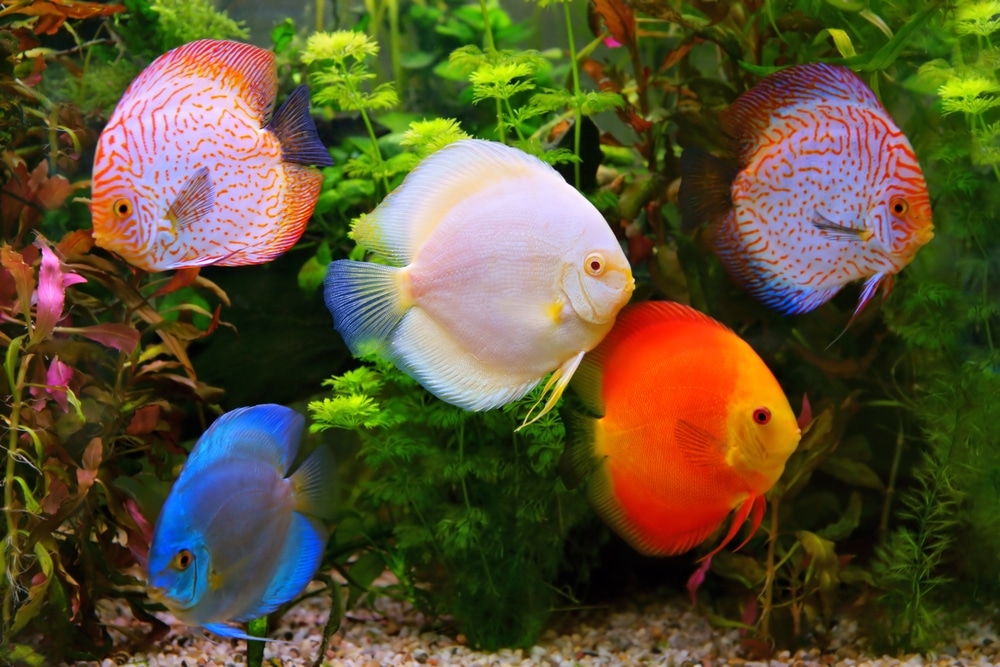
On a rare occasion, tank bred Discus will sometimes accept flake or pellet food. You can find the Symphysodon haraldi in the lower Amazon region.ĭiscus are carnivorous and will generally enjoy a wide variety of all kinds of live and frozen foods such as brine shrimp, bloodworm, chopped beef heart, and white worms. The Symphysodon discus is native to South America, originating from Brazil in the Rio Trombetas and the Rio Negro, North of the Amazon and from the Rio Abacaxis South of the Amazon. The Symphysodon aequifasciatus originates in the central Amazon region, often from the Putumayo River in northern Peru, and from Brazil near Santarem and the lake of Tefe. The three different species of Discus originate from other areas of the amazon these are as follows. In these areas, the riverbed is soft sediment and shaded. They can be found in still or slow-moving waters along the banks where they hide in holes and crevices in the water flow amongst tangled roots and branches, where their wide body is protected from the current. This pulse provides much more space for growth, breeding and best of all, feeding.

They inhabit Flood plains of the Amazon, where a periodic inundation and drought can change the level of the water as it rises along a shallow flood plain.

Through selective breeding, a wide variety of body colours are available, and these include greens, bright blues, reds, browns and yellows, as well as different body patterns such as spots, streaks and vertical or horizontal bars.ĭiscus are native to Brazil, Peru, Venezuela, and Columbia in South America. There are many colour varieties of this fish, possibly due to natural hybridisation, although most Discus available today are tank bred varieties. They have rounded anal and dorsal fins that add to their overall body shape, as well as pronounced caudal and pelvic fins. Some variations are more round or triangular shaped than others, but all are thin and flat looking. Symphysodon Discus which includes the Red Discus or Heckel Discus, Symphysodon Tarzoo which is the Green Discus and Symphysodon Aequifasciatus which contains the blue Discus and the brown Discus.ĭiscus fish are known for their disc shape appearance. They do not get on well with larger aggressive fish or smaller fin nipping species.ĭiscus is regarded as part of the Cichlid family and is characterised into three species. You can house Discus with many any other fish species as long as they require the same water conditions. For these reasons, they are not recommended for the beginner aquarist.

They tend to be vulnerable to illness when stressed, usually caused by not providing ample hiding places. The Discus are susceptible to typical fish ailments, especially if their water is stale and of low quality and oxygenation. They are slow feeders and need tankmates with a similar temperament.ĭiscus needs a higher level of care than other aquarium fish. You can keep several together alongside other peaceful tropical fish. Discus are a schooling fish and prefer to be housed in groups of six or more, but may not fare very well if kept as an individual. Unlike many other cichlid species, Discus are peaceful and highly social, and they do not predate on other fish. They are highly considered within the fish keeping hobby due to their intense colouring and elegant shape. Discus are colourful, pretty and charismatic tank inhabitants.


 0 kommentar(er)
0 kommentar(er)
